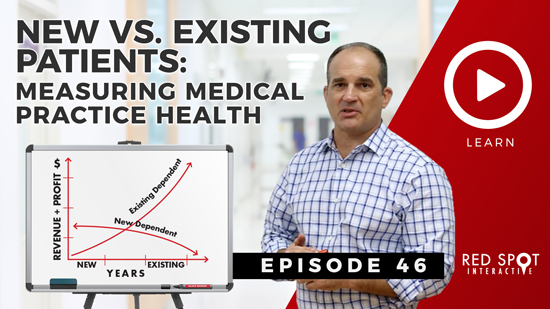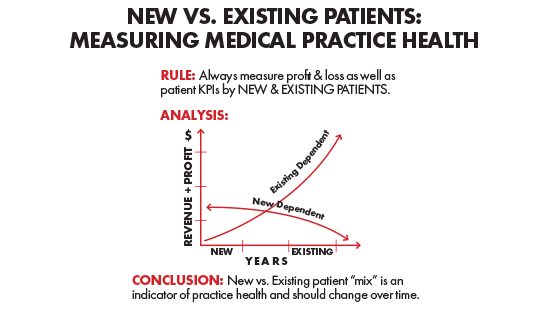Filter New and Existing Patients Separately
To begin, regularly assess the percentage of your profits that are spent acquiring new patients and what percentage is existing patients. That mix should change over time as your business becomes more mature. It is also an indicator of your success as you retain patients and gain referrals. This is essential, not just to profit and loss but to understanding your key performance indicators (KPIs).
You need to understand marketing’s impact for new patients, separately from existing patients. When you look at your lead to schedule rate, your schedule to attendance rate, and your conversion rate from an appointment to a booked purchase, those KPIs will be different between new and existing patients. Rates from new patients will likely be lower, as you are still early on in the relationship, while rates from existing patients will be higher, as that relationship has already been established. This is why you should always filter your analysis to make the best possible business decisions.
Measure New and Existing in Your Profit and Loss Statement
If you look at revenue versus the type of customer (new to existing), when you’re a new practice, you’ll have a larger percentage of revenue growth from new customers. However, as your practice gets older, your percentage will change. If your new vs. existing patient percentage is not changing as your practice matures, then you may have a patient retention problem that needs to be addressed. If your revenue is only coming from new patients, you will eventually exhaust the market. Unless you have a high retention rate, you won’t have the highest growth rate for your practice.
This comparison illustrates why it is so important to evaluate your profit and loss statements as well as your KPIs based on new patients and existing patients, separately. Ultimately, understanding that mix of new and existing patients is essential to maintaining your practice and growing your business.

















